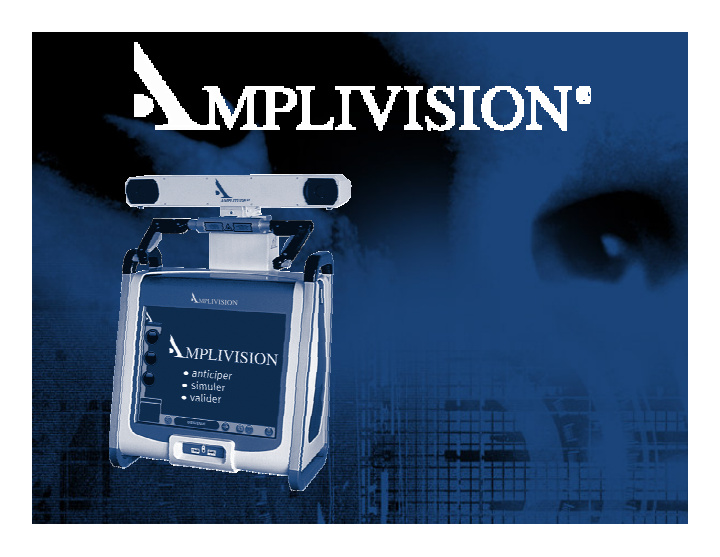



Steps in Naviguated Surgery Femur/Acetabulum Acetabulum/Femur Parameters Lewinnek (Optional) Femur acquisition Navigation femur Acquisition Bassin Acquisition Bassin Navigation Bassin Navigation Bassin Navigation femur Validation
Parameters: Surgical datas 1. Enter in the system : • Surgeon name • Patient name • Right or left side 2. Enter in the system : • Choice of bassin reference • Implant choice • Choice of the protocole • Length to achieve
Parameter: Calibratre stylus Goal: To know the position of the tip of the stylus on the rigid body. Procedure: Place the tip of the stylus on the RG fixed on the iliac bone in two different position.
Parameters: confident point Goal: Check if the RGs have moved during surgery. Procedure: Place the tip of the stylus on the base of the RGs.
Parameters: Calibrate the screen Goal: To allow the system to know the position of the screen from the surgeon. Procedure: Keep the stylus in direction of the sceen and validate.
Lewinnek: acquisitions… … three points ???
Femoral acquisition: transfert position 2 goals: •Create the Bassin reference(if not for Lewinnek). •Transfer the head center of the femur in the Bassin. Procedure: Place the leg so to simulate a person standing up,then validate.
Femoral acquisition : head center Goal: To know the center of the femoral head. This is the target in order to navigate the reamer. Procedure: Take several points on the femoral head surface until the diameter doesn’t change any more and validate.
Femoral acquisition : knee centre Procedure: Reproduce the epicondyle axis. Acquition of one point centre of the patella. This point is projected on the epicondyle axis and considered as the knee centre.
Femoral acquisition : Ankle centre Goal: Find the sagital plan of the leg. Procedure: Place the leg in flexion then take a point in the center of the ankle.
Bassin acquisition : Circle of the Acetabulum Goal: Have a reference de hauteur et de centrage anteroposteriorly. Procedure: Validate one point at the top of obturator hole. Validate one point on both anterior and posterior crest.
Bassin Acquisition : quadrilateral blade Goal: To have a reference of depth for reaming and impaction. Procedure: Take 10 points on the quadrilateral blade & validate.
Navigation of the femur: the menu Medullar axis acquisition Navigation of the rasp Navigation of the stem Anatomical Acquisitions
Navigation of the femur: medullar axis Goal: To know the medullar axis of the femur in order to calculate anatomical anteversion and to estimate the valgus/varus angle of the rasp . Procedure: Descend the medullar rod in the femoral canal and validate.
Femoral navigation : Rasp Goal: Positionning of the prosthetic head on the anatomical head. Parameters: • Length • Medialisation • Anteversion • Collar
Femoral navigation: Stem Goal: Positionning definitive head on the trial head. Parameters • Length • Medialisation • Anteversion • Collar • Impingement curves
Bassin navigation : the menu Reamer navigation Trial cup navigation Definitive navigation cup Anatomical acquisitions
Bassin navigation : the reamer Goal: To ream respecting planified inclination and anteversion angles. Parameters: • Inclination • Anteversion • Depth • Distance to the obturator hole • Impingement curves •Diameter of the head •Diameter of the reamer
Bassin navigation: Trial cup Goal: To Impact the same direction and depth than the reamer.
Bassin navigation : Definitive cup Goal: To Impact the same direction and depth than the reamer. Length and lateralisation As the rasp was navigated, the system can calculate the definitive length of the limb according to the position of the cup.
Validation Goal: Detect prosthetic & soft tissues conflicts. Procedure: • The colour of the prosthetic head becomes red when happens luxation. • The circle becomes red when happens a prosthetic conflict.
Recommend
More recommend